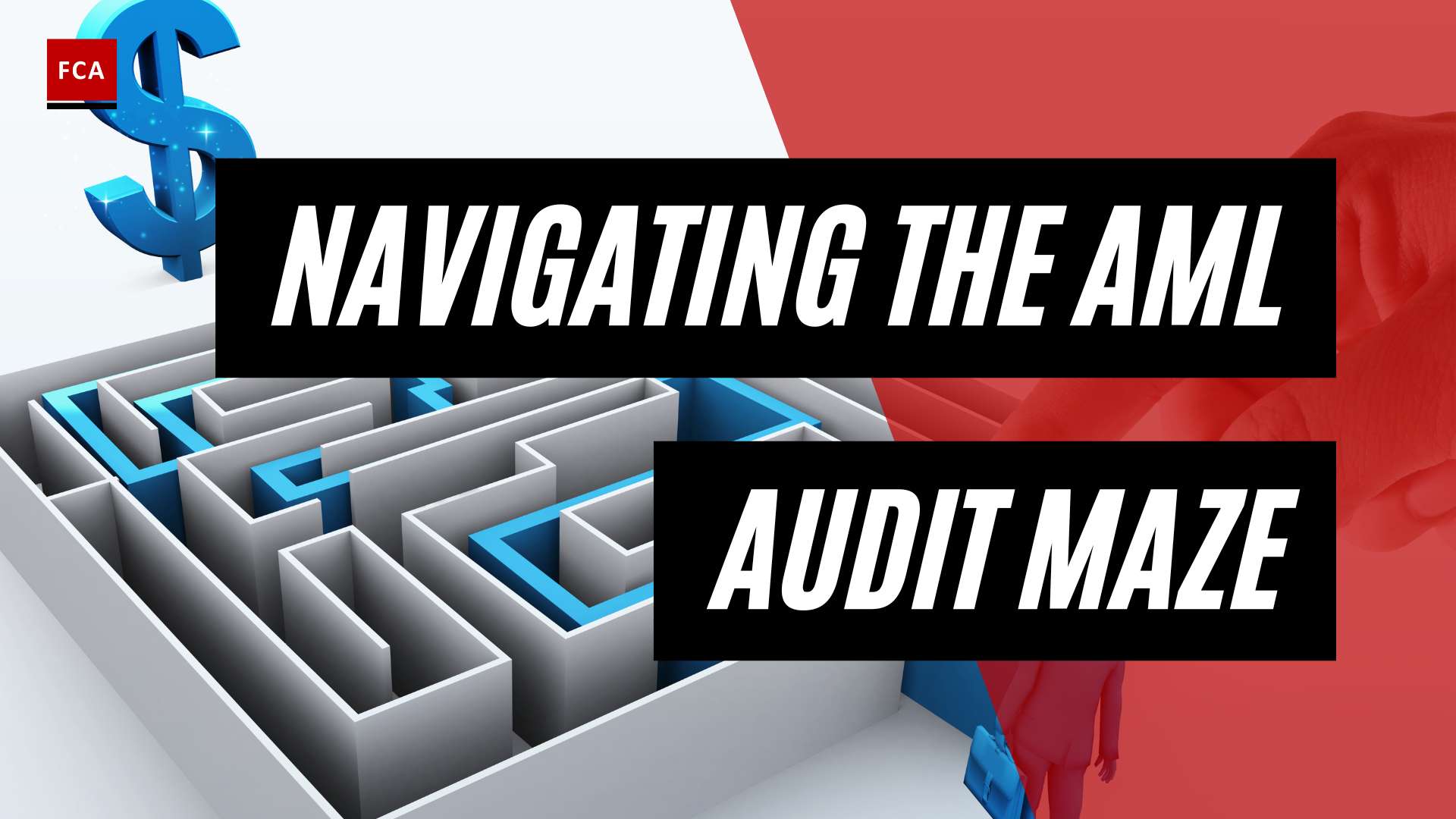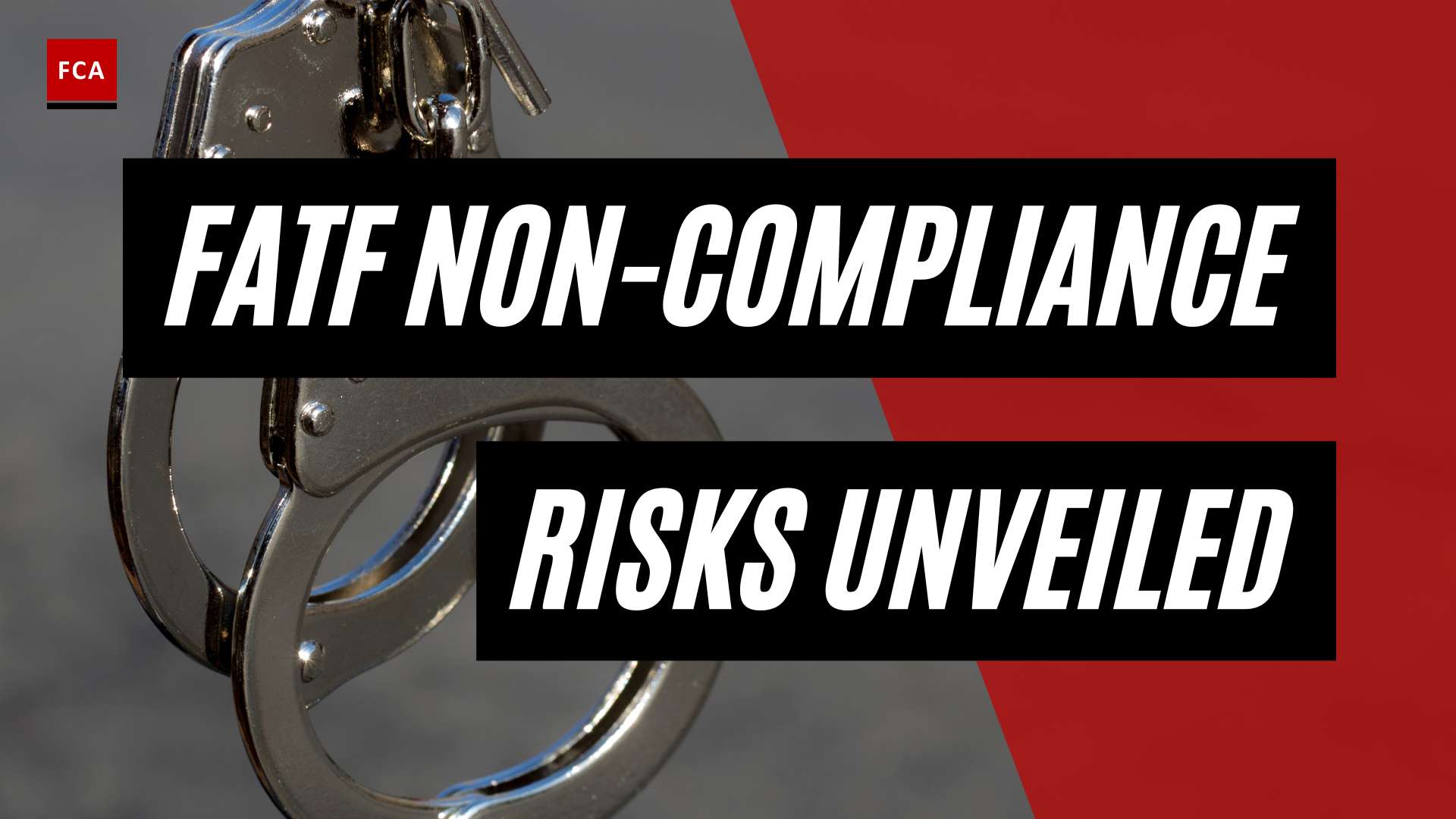Understanding AML Compliance
In the world of finance, Anti-Money Laundering (AML) compliance is of paramount importance. AML compliance solutions refer to the strategies, processes, and technologies implemented by organizations to ensure adherence to anti-money laundering regulations and requirements. These solutions play a vital role in preventing illegal financial activities and protecting the integrity of the financial system.
Introduction to AML Compliance
AML compliance is a comprehensive framework that aims to detect, prevent, and deter money laundering and other financial crimes. Money laundering involves disguising the origins of illicitly obtained funds, making them appear legitimate. This process enables criminals to integrate illegal proceeds into the legitimate economy.
AML compliance solutions help financial institutions, such as banks, fintech companies, and other entities, establish robust systems and controls to identify and mitigate the risks associated with money laundering. By implementing effective AML compliance measures, organizations can safeguard their operations, maintain regulatory compliance, and contribute to global efforts against financial crimes.
Importance of AML Compliance Solutions
The significance of AML compliance solutions cannot be overstated. They enable organizations to fulfill their legal obligations and regulatory requirements, such as those outlined in the Bank Secrecy Act (BSA) and the USA PATRIOT Act. These regulations mandate that financial institutions have AML programs in place to detect and prevent money laundering (Dow Jones).
AML compliance solutions offer several key benefits:
-
Risk Mitigation: By implementing robust AML compliance measures, organizations can identify and mitigate the risks associated with money laundering, terrorist financing, and other financial crimes. This helps safeguard the reputation and integrity of the institution.
-
Regulatory Compliance: AML compliance solutions ensure that organizations adhere to relevant anti-money laundering regulations and requirements. Compliance with these regulations is crucial for avoiding legal penalties, reputational damage, and business disruptions.
-
Customer Due Diligence: AML compliance solutions enable organizations to perform customer due diligence (CDD) to verify the identity of customers and assess their risk profile. Through effective CDD processes, organizations can identify and mitigate potential money laundering risks.
-
Transaction Monitoring: AML compliance solutions facilitate real-time transaction monitoring, allowing organizations to detect and investigate suspicious activities promptly. By monitoring transactions, organizations can identify patterns, anomalies, and potential red flags indicative of money laundering or other financial crimes.
-
Advanced Technologies: AML compliance solutions often incorporate advanced technologies such as artificial intelligence, machine learning, and data analytics. These technologies enhance the effectiveness and efficiency of AML monitoring and investigations, enabling organizations to stay ahead of evolving threats.
To effectively navigate the complexities of AML compliance, organizations should consider implementing comprehensive AML compliance solutions. These solutions combine regulatory expertise, robust technologies, and best practices to create a strong defense against money laundering and financial crimes. By prioritizing AML compliance, organizations can contribute to a safer and more secure financial ecosystem.
Third-Party and Partner AML Assessments
To ensure effective AML compliance and mitigate the risk of money laundering, businesses often need to evaluate the AML practices of external entities they engage with. This includes conducting third-party and partner AML assessments. Let’s explore an overview of these assessments, key considerations for partner assessments, and the benefits of collaborative AML compliance efforts.
Overview of Third-Party AML Assessments
Third-party AML assessments involve evaluating the AML compliance of external entities that a company engages with, such as vendors, suppliers, or business partners. These assessments are essential to ensure that these third parties also adhere to AML regulations and have adequate measures in place to prevent money laundering. By conducting thorough assessments, companies can minimize the risk of being associated with illicit activities and enhance their overall AML compliance posture.
Key Considerations for Partner AML Assessments
Partner AML assessments focus on evaluating the AML compliance of business partners or counterparties with whom a company has a close relationship or engages in financial transactions. It’s crucial to assess the AML practices of partners to ensure they are committed to preventing money laundering and complying with AML regulations. Key considerations for partner AML assessments may include:
- Due Diligence: Conducting comprehensive AML due diligence to assess partners’ risk profiles, including their reputation, ownership structure, and industry reputation.
- Policies and Procedures: Evaluating partners’ AML policies and procedures to ensure they align with industry best practices and regulatory requirements.
- Internal Controls: Assessing the effectiveness of partners’ internal controls, such as customer due diligence, transaction monitoring, and suspicious activity reporting processes.
- Training and Awareness: Reviewing partners’ AML training programs to ensure employees are knowledgeable about AML regulations and understand their roles and responsibilities in preventing money laundering.
By considering these factors, companies can make informed decisions when engaging with partners and ensure that their business relationships align with their own AML compliance standards.
Benefits of Collaborative AML Compliance Efforts
Collaborative AML compliance efforts involve working together with third parties and partners to establish effective AML compliance measures. By sharing information, resources, and best practices, companies can enhance their overall AML compliance and create a more robust defense against money laundering.
The benefits of collaborative AML compliance efforts include:
- Improved Risk Management: Collaborating with partners who have strong AML compliance programs can help companies enhance their risk management framework. By aligning compliance efforts, companies can collectively identify and address potential risks and vulnerabilities more effectively.
- Increased Transparency: Collaborative AML compliance efforts encourage transparency between partners, allowing for better monitoring and understanding of financial activities. This transparency can help identify and prevent suspicious transactions or activities more efficiently.
- Enhanced Detection and Prevention: By sharing knowledge and expertise, companies can collectively strengthen their ability to detect and prevent money laundering activities. Collaborative efforts can lead to more comprehensive and coordinated approaches, leveraging the strengths and resources of all parties involved.
Partnering with third parties who have strong AML compliance programs can help companies reduce their own compliance burden and enhance their overall risk management framework. By working together, companies can create a more comprehensive and coordinated approach to combating financial crimes.
In the next section, we will explore the role of AML compliance software solutions in streamlining AML processes and enhancing overall compliance efforts.
AML Compliance Software Solutions
In the ever-evolving landscape of Anti-Money Laundering (AML) compliance, organizations are increasingly turning to AML compliance software to enhance their efforts in combating financial crimes. AML compliance software plays a pivotal role in helping organizations streamline their compliance processes and mitigate risks associated with money laundering and other illicit activities.
Role of AML Compliance Software
AML compliance software encompasses a range of tools and technologies designed to prevent, detect, and report potential money laundering activities and financial crimes. These software solutions enable financial institutions and regulated organizations to effectively manage their AML programs, automate key processes, and ensure compliance with regulatory requirements.
Key features and capabilities of AML compliance software include:
-
Identity Verification: AML software facilitates robust identity verification processes, ensuring that customer information is accurate and reliable. This helps organizations establish the true identities of their customers and assess the associated risks.
-
Transaction Monitoring: AML compliance software enables real-time monitoring of transactions, allowing organizations to identify and flag suspicious activities promptly. By analyzing transactional data, the software can detect patterns and anomalies that may indicate potential money laundering or illicit transactions.
-
Sanctions and PEP Screening: AML software incorporates comprehensive databases to screen individuals and entities against global sanctions lists and politically exposed persons (PEP) databases. This screening helps organizations comply with regulatory requirements and identify high-risk customers.
-
Risk Assessment and Management: AML compliance software enables organizations to conduct risk assessments, evaluate customer profiles, and assign risk ratings accordingly. This risk-based approach helps prioritize compliance efforts and allocate resources effectively.
-
Suspicious Activity Reporting: AML software provides a structured framework for generating suspicious activity reports (SARs). These reports detail potentially suspicious transactions or activities and are crucial for regulatory reporting obligations.
-
Investigation Optimization: AML compliance software streamlines the investigation process by providing tools for case management, workflow automation, and collaboration among compliance teams. This optimization enhances efficiency and ensures thorough investigations.
-
Alert Scoring: AML software employs advanced algorithms to score alerts generated during transaction monitoring. By assigning risk scores to alerts, compliance teams can focus their attention on higher-priority cases.
Benefits of Implementing AML Compliance Software
Implementing AML compliance software offers numerous benefits for organizations in their fight against financial crimes. Some of the key advantages include:
-
Efficiency: AML compliance software automates repetitive tasks, reducing reliance on manual effort and improving overall operational efficiency. This enables organizations to handle larger volumes of data and transactions while maintaining accuracy and consistency.
-
Real-Time Monitoring: AML software enables organizations to conduct thorough and real-time monitoring of transactions, helping them identify and address potential risks promptly and effectively. This proactive approach enhances the ability to detect and prevent money laundering activities.
-
Regulatory Compliance: AML compliance software ensures that organizations adhere to regulatory requirements and guidelines. By automating compliance processes and maintaining comprehensive audit trails, organizations can demonstrate their commitment to regulatory compliance during audits and examinations.
-
Risk Mitigation: AML software facilitates risk assessment and management, allowing organizations to identify and mitigate risks associated with money laundering and financial crimes. By implementing risk-based AML programs, organizations can better allocate resources and focus on higher-risk areas.
-
Enhanced Reporting: AML compliance software generates accurate and comprehensive reports, including suspicious activity reports (SARs), transaction reports, and audit trails. These reports help organizations meet their regulatory reporting obligations and provide a clear audit trail for compliance activities.
By leveraging the capabilities of AML compliance software, organizations can strengthen their AML programs, improve their risk management processes, and enhance their overall compliance efforts. These solutions enable organizations to stay ahead of evolving regulatory requirements and combat the ever-changing landscape of financial crimes effectively.
Leveraging Technology for Effective AML Compliance
To ensure effective AML compliance in today’s complex financial landscape, leveraging technology has become essential. Automation, artificial intelligence (AI), and data analytics play a significant role in enhancing the efficiency and accuracy of AML processes.
Automation in AML Compliance
Automated anti-money laundering solutions help streamline AML processes by digitizing repetitive tasks and reducing reliance on manual efforts. By automating routine activities such as customer due diligence, transaction monitoring, and suspicious activity reporting, financial institutions can protect themselves from fines and reputational harm while ensuring compliance with regulatory requirements (Moody’s).
Automation enables financial institutions to handle large volumes of data more efficiently, reducing the risk of oversight and improving the overall effectiveness of AML programs. It also allows for real-time monitoring and alerts, enabling timely detection of suspicious activities and facilitating prompt reporting to regulatory authorities.
Role of Artificial Intelligence in AML
Artificial intelligence plays a crucial role in optimizing AML operations and management. AI-powered AML compliance software uses machine learning algorithms to analyze vast amounts of data, identify patterns, and detect anomalies that may indicate potential money laundering activities. This advanced technology enables a more systematic and proactive approach to AML compliance, improving the accuracy and effectiveness of suspicious activity detection (Tookitaki).
AI algorithms can continuously adapt and learn from new data, enhancing their detection capabilities over time. By leveraging AI, financial institutions can stay ahead of evolving money laundering techniques and keep pace with emerging regulatory requirements. This technology enables more efficient risk assessment, customer profiling, and watchlist screening, empowering organizations to identify and mitigate AML risks more effectively.
Enhancing AML Monitoring with Data Analytics
Data analytics is a powerful tool in AML compliance. By analyzing vast amounts of structured and unstructured data, financial institutions can uncover hidden insights, identify trends, and detect suspicious patterns more effectively. Data analytics allows for a holistic view of customer behavior, facilitating the identification of unusual transactions or activities that may indicate money laundering or other financial crimes.
AML compliance software leverages data analytics capabilities to provide a comprehensive suite of tools for financial institutions. Features such as risk profiling, identity verification, transaction monitoring, sanctions and PEP screening, and case management enable organizations to monitor customer activities more efficiently, detect potential risks, and generate accurate reports for regulatory compliance (FinScan).
By leveraging technology, financial institutions can enhance their AML compliance efforts, improve operational efficiency, and mitigate the risks associated with money laundering and financial crimes. Automation, AI, and data analytics empower organizations to stay compliant with AML regulations while effectively combating the evolving challenges of money laundering in the digital age.
Navigating AML Regulations
To ensure compliance with anti-money laundering (AML) regulations, businesses must navigate a complex landscape of requirements and stay up to date with regulatory changes. In this section, we will explore key AML regulations and requirements, discuss the challenges faced in achieving compliance, and highlight AML solutions that aid in regulatory adherence.
Key AML Regulations and Requirements
AML regulations exist to prevent illegal financial activities, such as money laundering and terrorist financing. Financial institutions are obligated to have robust AML compliance programs in place to detect and prevent these activities. Key regulations and requirements include:
-
Bank Secrecy Act (BSA): The BSA, enacted in the United States, mandates financial institutions to establish AML programs and report certain transactions to the government. It aims to combat money laundering and protect the integrity of the financial system.
-
USA PATRIOT Act: This act, also in the United States, strengthens AML efforts by expanding the scope of regulations and enhancing customer due diligence (CDD) requirements. It focuses on preventing money laundering related to terrorism and other illicit activities.
-
Country-Specific Regulations: Each country has its own set of AML regulations that financial institutions must adhere to. For example, in the United Arab Emirates (UAE), the Central Bank has issued guidelines to mitigate AML compliance risks and protect the reputation and integrity of financial institutions.
Compliance with these regulations requires financial institutions to implement robust AML programs that include transaction monitoring, customer due diligence, reporting suspicious activities, and maintaining comprehensive records. By adhering to these regulations, businesses contribute to the prevention of financial crimes and the preservation of the integrity of the financial system.
Compliance Challenges and Regulatory Updates
Achieving and maintaining AML compliance can be challenging due to several factors. Financial institutions face the need to keep pace with evolving regulations, which require ongoing updates and enhancements to compliance programs. Additionally, the complexity of financial transactions and the ever-changing nature of money laundering techniques pose challenges in effectively detecting and preventing illicit activities.
Regulatory updates are frequent, and financial institutions must continuously monitor and adapt their AML compliance programs to remain in line with the latest requirements. Failing to comply with these updates can result in regulatory penalties and reputational damage.
AML Solutions for Regulatory Compliance
To navigate AML regulations effectively, businesses can leverage AML compliance solutions. These solutions encompass a range of tools, technologies, and practices that enable financial institutions to meet regulatory requirements and mitigate the risks associated with money laundering and financial crimes.
Implementing AML compliance software is a key component of an effective AML solution. AML software plays a crucial role in automating AML processes, enhancing the efficiency and accuracy of monitoring, and streamlining compliance obligations. These software solutions often incorporate advanced technologies such as artificial intelligence, machine learning, and data analytics to improve detection capabilities and reduce false positives.
By leveraging AML compliance solutions, financial institutions can strengthen their risk management processes, maintain regulatory compliance, and build a robust framework for preventing money laundering and financial crimes. These solutions help businesses monitor transactions, conduct customer due diligence, and enhance their overall AML program effectiveness.
In conclusion, navigating AML regulations requires a comprehensive understanding of key regulations and requirements. Financial institutions face challenges in achieving compliance due to evolving regulations and the complexities of financial transactions. However, by implementing AML compliance solutions, businesses can enhance their regulatory adherence, mitigate risks, and contribute to the overall integrity of the financial system.
Best Practices for AML Compliance
To effectively combat money laundering and ensure compliance with anti-money laundering (AML) regulations, organizations must implement robust AML compliance programs. These programs should incorporate best practices that address risk assessment, transaction monitoring, and enhanced due diligence.
Implementing Risk-Based AML Programs
Implementing risk-based AML programs is a crucial aspect of compliance. These programs involve conducting a comprehensive risk assessment to identify and evaluate money laundering risks associated with the organization’s operations, customers, and products. By assigning risk scores based on predefined factors, such as customer type, transaction volume, and geographic location, organizations can prioritize their resources and focus on higher-risk areas.
Key elements of risk-based AML programs include:
- Conducting thorough customer due diligence (CDD) to verify the identity of customers and assess their risk level.
- Triggering alerts when risk thresholds are exceeded, enabling organizations to promptly investigate and mitigate potential money laundering activities.
- Implementing regular reviews and updates of risk assessments to ensure ongoing effectiveness and compliance with changing regulations.
By adopting risk-based AML programs, organizations can tailor their compliance efforts to their specific risk profiles, providing a more targeted and efficient approach to combating money laundering.
Transaction Monitoring and Reporting
Deploying effective transaction monitoring tools is essential for maintaining a strong AML compliance program. These tools enable organizations to detect and report suspicious activities by monitoring customer transactions in real-time. By establishing predefined rules and parameters, organizations can identify transactions that deviate from normal patterns and potentially indicate money laundering or terrorist financing activities.
Transaction monitoring and reporting involve:
- Conducting a thorough risk evaluation of money laundering and terrorist financing risks associated with the organization’s operations.
- Implementing transaction monitoring tools that can identify unusual or suspicious transactions based on predefined rules and risk thresholds.
- Maintaining records of due diligence efforts and suspicious activity reports (SARs) to demonstrate compliance with regulatory requirements.
By diligently monitoring transactions and promptly reporting suspicious activities, organizations can contribute to the overall efforts of combating money laundering and protecting the integrity of the financial system.
Enhanced Due Diligence and Risk Assessment
Enhanced due diligence (EDD) and risk assessment play a vital role in AML compliance, particularly when dealing with high-risk customers or transactions. Organizations need to apply stricter know your customer (KYC) procedures and closely monitor transactions originating from high-risk countries or involving high-risk individuals or entities.
Key considerations for enhanced due diligence and risk assessment include:
- Conducting thorough background checks and verifying the legitimacy of high-risk customers or counterparties.
- Implementing transaction monitoring tools that are integrated with risk assessment to detect and flag transactions involving high-risk entities.
- Regularly reviewing and updating risk assessments to ensure ongoing compliance with regulatory requirements.
By incorporating enhanced due diligence measures and conducting risk assessments, organizations can mitigate the risks associated with money laundering activities and demonstrate their commitment to regulatory compliance.
By implementing these best practices, organizations can enhance their AML compliance efforts, minimize the risk of money laundering, and contribute to a more secure and transparent financial environment. To further support AML compliance, organizations can leverage advanced AML compliance software solutions, as well as stay updated with key AML regulations and requirements.








